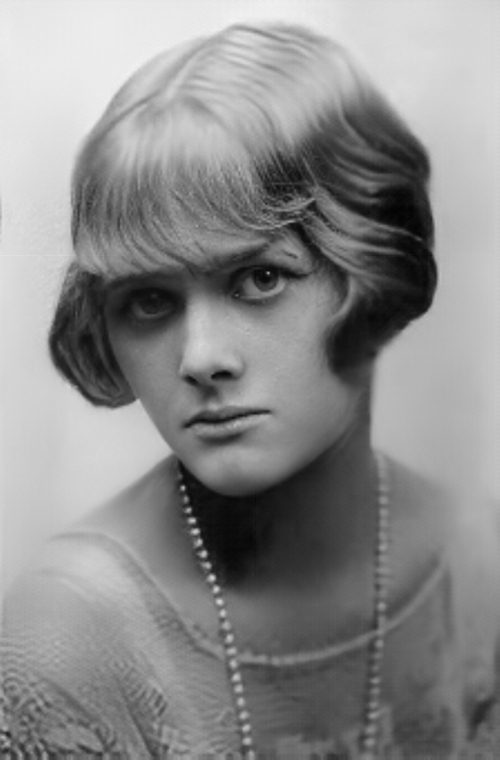Summary | Excerpt | Reviews | Beyond the Book | Read-Alikes | Genres & Themes | Author Bio

This article relates to The Breakthrough
 Author Daphne du Maurier belonged to a rich dynasty of storytellers and creatives. Her parents, Gerald du Maurier and Muriel Beaumont, both led successful acting careers. Her grandfather, George du Maurier, was a celebrated novelist and illustrator, while her uncle Guy de Maurier was a playwright. Du Maurier was the middle of three sisters, and each of the trio would go on to creative endeavors: Angela, as an actress and writer; Jeanne, as a painter; and Daphne, of course, as an author.
Author Daphne du Maurier belonged to a rich dynasty of storytellers and creatives. Her parents, Gerald du Maurier and Muriel Beaumont, both led successful acting careers. Her grandfather, George du Maurier, was a celebrated novelist and illustrator, while her uncle Guy de Maurier was a playwright. Du Maurier was the middle of three sisters, and each of the trio would go on to creative endeavors: Angela, as an actress and writer; Jeanne, as a painter; and Daphne, of course, as an author.
Born in London on May 13th, 1907, Daphne du Maurier showed promise as a writer from a young age. It was her governess, Maud Waddell — known affectionately as Tod — who is said to have nurtured and encouraged du Maurier's love of literature most of all, sparking a lifelong friendship between the two.
Throughout her childhood, the family regularly visited Cornwall, on England's south coast. Taken by its dramatic landscapes, they made the move there in 1926 to Ferryside, a country house picked out by Daphne, her sisters, and their mother. It was while at Ferryside that du Maurier wrote and published her first novel, The Loving Spirit (1931). The book was a success, not least for du Maurier's personal life. One reader, Major Tommy "Boy" Browning, was so enraptured by the novel that he sailed to Cornwall specifically in the hopes of meeting its author. The pair did indeed meet, marrying in 1932 and going on to have three children, Tessa (b. 1933), Flavia (b. 1937), and Christian (b. 1940).
Once married, du Maurier continued to write, but she also spent several years attempting to play the role of dutiful military wife, as was expected of women at the time. Following her husband around the world depending on his deployment, she always longed for home. It was while homesick in the heat of Egypt that she began to write Rebecca (1938) — arguably her most enduring work. Years prior, du Maurier had discovered Menabilly, an imposing country manor, while walking in Cornwall. Menabilly served as the inspiration for Manderley, the iconic setting of Rebecca.
Published to immediate international success, Rebecca made du Maurier a household name and it has never been out of print since. Her fame was bolstered further by several high-profile screen adaptations of her work, most notably those directed by Alfred Hitchcock: Jamaica Inn (1939), Rebecca (1940), and The Birds (1963).
In 1943, du Maurier convinced the leaseholders of Menabilly to rent it to her, and thus the building that had long intrigued and inspired her finally became her home. By the 1950s, du Maurier was described as "the highest paid woman writer in Britain." She would continue to live and work at Menabilly for more than two decades, during which time her science fiction story The Breakthrough (1966), along with many other stories and novels, would be published. But while her public profile grew, she was relatively guarded and reclusive. This perhaps contributed to the intense curiosity surrounding the lesser-known aspects of her life. This fascination remains to this day, with much speculation and conflicting reports concerning her sexuality and possible love affairs.
Following her husband's death in 1965, the lease on Menabilly was not renewed, and in 1969 du Maurier relocated to Kilmarth, a smaller house about a mile away. She would continue to write for as long as her health would allow. On April 19th, 1989, Daphne du Maurier died at home, aged 81. According to her wishes, and in keeping with her desire for discretion, she was cremated in private and received no public memorial, her ashes scattered off the cliffs of her beloved Cornwall.
Restored photo of Daphne du Maurier c. 1930, via Wikimedia Commons
Filed under Books and Authors
![]() This article relates to The Breakthrough.
It first ran in the January 29, 2025
issue of BookBrowse Recommends.
This article relates to The Breakthrough.
It first ran in the January 29, 2025
issue of BookBrowse Recommends.
There is no such thing as a moral or immoral book. Books are either well written or badly written. That is all.
Click Here to find out who said this, as well as discovering other famous literary quotes!
Your guide toexceptional books
BookBrowse seeks out and recommends the best in contemporary fiction and nonfiction—books that not only engage and entertain but also deepen our understanding of ourselves and the world around us.